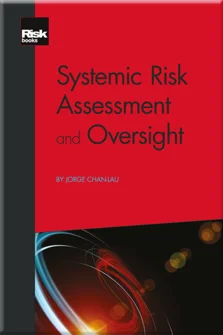Fundamental Information and Firm-level Risk
Why Systemic Risk Oversight Matters
The Bottom-up Approach to Systemic Risk
Fundamental Information and Firm-level Risk
Extracting Risk Measures from Credit Derivatives and Bonds
Equity-implied Methods and Risk-neutrality Transformations
Systemic Risk Measurement: Statistical Methods
CoRisk: Quantile Regressions in Practice
Balance-sheet Network Analysis
The Portfolio-based Approach to Systemic Risk
The Regulation of Systemic Risk
Financial linkages, which can be as simple as a loan or as complex as a structured product, connect financial institutions and non-financial corporations with each other. The interconnectedness of the financial system, while beneficial, can transmit stresses affecting one institution to a host of others. In an extreme case, the failure of one institution can trigger a domino effect, bringing down other institutions.
The possibility that a single default can trigger system-wide defaults requires assessing the viability of an institution from a standalone basis or, in other words, calculating its probability of default. The choice of the appropriate method for performing this calculation is mainly guided by data availability. Typical data sources include financial statements data, ratings and the prices of securities issued by the firm. Estimates obtained using different data or the same data but different methods should be used to ensure consistency.
This chapter will focus on fundamentals-based methods for estimating probabilities of default. These methods rely on financial data typically used for stock valuation and ratings analysis, mainly financial ratios. One advantage of
Copyright Infopro Digital Limited. All rights reserved.
As outlined in our terms and conditions, https://www.infopro-digital.com/terms-and-conditions/subscriptions/ (point 2.4), printing is limited to a single copy.
If you would like to purchase additional rights please email info@risk.net
Copyright Infopro Digital Limited. All rights reserved.
You may share this content using our article tools. As outlined in our terms and conditions, https://www.infopro-digital.com/terms-and-conditions/subscriptions/ (clause 2.4), an Authorised User may only make one copy of the materials for their own personal use. You must also comply with the restrictions in clause 2.5.
If you would like to purchase additional rights please email info@risk.net










